OpenAI株式会社の重大な変動:企業形態の変動、人事の変動

OpenAIはサンフランシスコに本社を置く人工知能企業であり、ChatGPTなどの製品で有名です。同社は近い将来、非営利団体から伝統的な企業形態に転換する可能性が高い。この動きは運営の重点を大きく転換し、株主の利益とより緊密に結びつけることを意味します。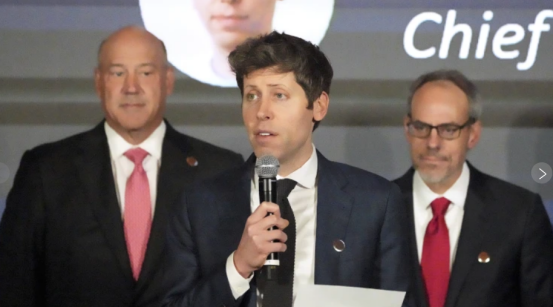
加えて、人工知能の巨頭であるOpenAIには重大な人事変動と潜在的な再編が発生し、複数の高級管理職が退職を発表しました。会社のリーダーシップ層は大規模な改組を経験し、業界の広範な注目を集めています。OpenAIのCEOサム・アルトマンはイタリアで開催された技術会議での公開コメントで、同社が再編を検討していることを認めましたが、最近の高級管理職の辞任はこの潜在的な変化とは無関係であると主張しました。これらの変化はOpenAIが新たな発展段階に入ることを示す可能性があります。
Open AIが営利企業に変更される可能性
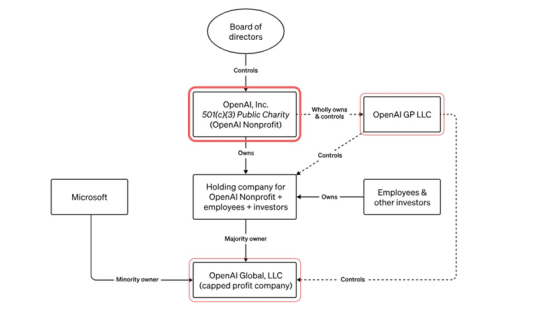
Open AIは非営利機関としてスタートし、研究の目的はフレンドリーな人工知能の促進と発展を図り、人類全体に利益をもたらすことにあります。同組織は特許と研究を一般公開し、他の機関や研究者と「自由に協力」することを表明しています。非営利組織であるOpenAI, Inc.はOpenAI Global, LLCの唯一の持株会社であり、OpenAI Global, LLCは営利企業ですが、依然としてOpenAI, Inc.の非営利規章に対して正式な受託責任を負っています。OpenAI, Inc.の取締役会の大多数のメンバーは、OpenAI Global, LLCの株式を保有することを禁止されています。
しかし、非営利研究機関としてChatGPTなどの商業製品を販売するOpenAIの歴史は、旧金山のこの会社がより全面的に株主に責任を持つ営利企業へと変貌を遂げようとしているため、間もなく終わるかもしれません。事態に詳しいが公に話す権限のない情報筋によると、この人工知能企業の取締役会は非営利取締役会の支配から外れ、OpenAIを営利企業に転換することを検討しています。また、OpenAIはCEOのサム・アルトマンに同社の7%の株式を持たせることを議論中であり、これはアルトマンが初めてこの人工知能スタートアップの所有権を得ることを示す重大な転換です。
報道によると、OpenAIは今後5年間で月額料金を積極的に引き上げ、ChatGPTの月額サブスクリプション料金を最大44ドルまで引き上げる計画です。これは、非営利企業から営利企業への移行の一環として進んでいます。他のAIツール、例えばXXAIのように複数のモデルを使用して月額わずか9.9元のツールと比較すると、XXAIの価格には実際に大きな競争優位性があります。
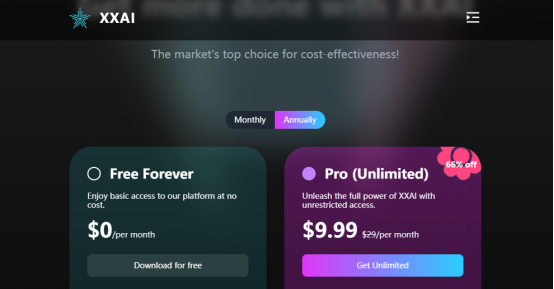
外部の見解:Open AIが営利組織に変わることに対する反応

Voxは、「OpenAIはもう存在しない!」と述べています。OpenAIの創設チームは一貫して、人工知能が安全かつ有益に発展することを最優先事項として強調してきました。しかし、今や同社は営利企業に転換しようとしています——アルトマンは私たち全員を裏切ったのです。
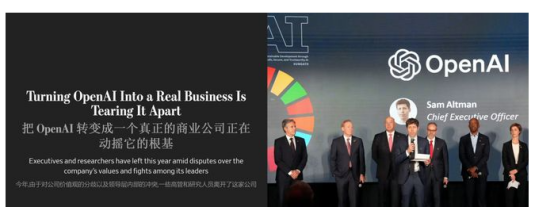
WSJは、OpenAIに真の利益をもたらすビジネスが同社を崩壊寸前まで追い込んでいると報じています。
Open AIの人事異動:会社は大規模な再編と幹部の退職に直面
1. OpenAIのCTOであるMira MuratiがTwitterにて退職を発表

Muratiは「深い熟慮を重ねた結果、私はOpenAIを離れるという難しい決断をしました。離れるのは自分探しの旅に出るための時間と空間を確保するためで、現時点での最優先事項は円滑な移行を確保することです」と述べました。
2. Bob McGrewは休息の必要性を感じています
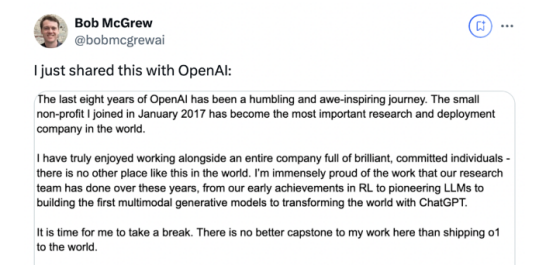
Bob McGrewは「聡明で献身的な同僚と共に働けたことを非常に楽しんでいました。これまでの研究チームの仕事、強化学習の初期成果から始まり、大規模な言語モデルの画期的な開発、最初のマルチモーダル生成モデルの構築、そして最終的にChatGPTによる世界の変革に至るまで、全てに対して非常に誇りに思っています。今は休息のときです」と述べました。
3. Barret Zophは退職を発表
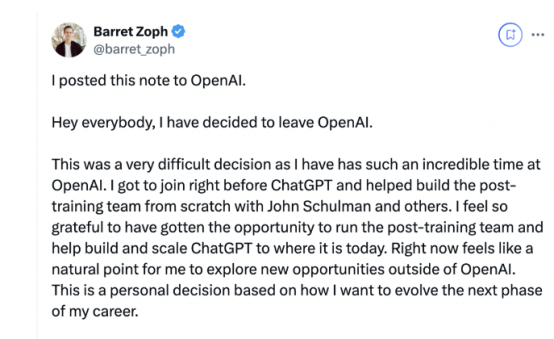
Barret Zophは「個人的なキャリア成長のためにも、OpenAIの外で新しい機会を探索する時期が来たようです」と述べました。
人事異動の潜在的要因
1. OpenAIが商業企業に変わろうとしているため、内部の理念衝突が激化
昨年11月にAltmanが再びOpenAIのCEOに就任して以来、OpenAIは次第に商業企業へと変貌しつつあります。また、同社はますます製品ラインの拡大に注力しており、それが研究の焦点に影響を与えていると長期勤務の社員らは述べています。さらに資金の注入と莫大な利益の見通しが、OpenAIの文化を腐食しています。
2. 会社は当初の使命ではなく製品の提供を優先している
不完全なデータに基づく初期結果は、GPT-4の安全性が十分であり、展開可能と示しました。しかしモデルのリリース後、このプロジェクトに詳しい人々は、その後の分析でモデルの説得力がOpenAIの内部基準を超えていることが判明したと述べました。安全チームはこの問題をOpenAIの幹部に提起し、解決に取り組んでいました。もし会社がもう少し時間をかけて安全テストを行っていたならば、問題がユーザーに到達する前に解決されていたでしょう。
3. 管理方式に問題がある
アルトマンの管理スタイルは批判を受け、関係者に不満を感じさせています。彼は内部の争いを放置する傾向があり、それがOpenAIの利益を損なう可能性があります。このため社員の士気が大幅に低下しています。
4. 仕事のプレッシャーが大きく、核心スタッフはより高い報酬を要求している
短期間での製品リリース、夜間や週末に加班。MuratiやMcGrewのようなリーダーと共に働く従業員も、これらのプレッシャーが過度に重いと感じています。
OpenAIの技術人材の流出は企業再編と関係があるのか?

OpenAIの最高経営責任者(CEO)であるサム・アルトマンは、最近の最高技術責任者(CTO)のミラ・ムラティや最高研究責任者(CSO)ボブ・マグルーなどの幹部の退職は、会社の再編とは関係がないと述べました。リーダーシップの流失が続く中で、アルトマンは最新のインタビューにおいて、OpenAIはむしろさらに強くなると表明しています。
要約
最近、OpenAI社では重大な変化が起こり、この出来事は業界内で広範な注目と議論を引き起こしました。この変化の中で、会社内部の人事調整が焦点となり、多くの人々がOpenAIのコアチームの動向に非常に興味と関心を示しています。業界の専門家、メディア、および関連業界の従事者たちは、これらの人事変動が会社の運営効率や革新能力に与える可能性のある重要な影響について意見を述べています。
また、OpenAIが事業戦略と発展方向を調整している中で、多くの人々が会社の営業性質の変更についても自身の見解と予測を出し、この変動がもたらす可能性のある長期的な影響や、人工知能業界全体の構造に及ぼす潜在的な役割について議論しています。